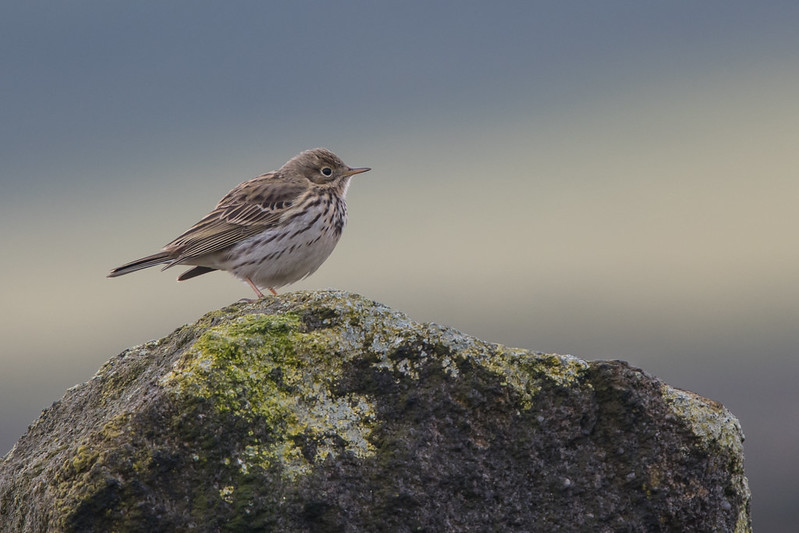
I have to remind myself that this is one of the most numerous species in the UK because I don’t see them much around me. There’s an old airfield near me where Meadow Pipits nest in thelonger patches of grass – and it always surprises me to find them there, close to my home, singing away just as they do on heather-clad moorlands in the uplands. Meadow Pipits (the name is a clue) must have declined an awful lot in the lowlands over the last century.
But go to the uplands and you’ll almost always be within earshot of a singing Meadow Pipit at this time of year. And they make things easier by often singing in a song flight which ends with them ‘parachuting’ to earth still singing.
Here are some Meadow Pipit songs. First from Denmark:
… and this from Poland:
… and another from Scotland:
It’s a song characteristic of the British uplands these days. Meadow Pipits make good food for Hen Harriers and Merlins.
[registration_form]
If you’ve worked or regularly looked at wildlife in the uplands then seeing and hearing Mipits as they are known is a given. In fact in many places they were or are ubiquitous so after a while to stop noticing at least the sound of the singing pipits. They have however certainly declined and they are orange listed. They are as Mark implies the Short tailed Vole of the bird world in the uplands, lots of things eat them. Merlins, Hen Harriers, Hobbies, Buzzards even Peregrines are not above taking them, Stoats, Weasels, just about all upland predators eat this bird.
Twenty odd years ago or more, when our bird populations were a bit healthier. When Merlins returned to the moors in spring few pipits had arrived and you often found birds of the woodland edge ( chaffinch and the like) on Merlin plucking posts, later it was usually lots of pipits until the Merlin young were big and then the adults took young starlings from the flocks on the moor after caterpillars, a starling is 6X the weight of a pipit. In those days you often at this stage found surplus food at a Merlin nest ( probably eaten on poor hunting days) Now those Starlings are largely gone so the adult Merlins have to work much harder to feed their brood mainly on pipits.